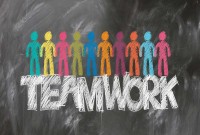- Home
- Business Processes
- Industry Knowledge
- Aerospace Industry
- Automotive Industry
- Banking Domain
- BFSI Industry
- Consumer/ FMCG Industry
- Chemicals Industry
- Engineering & Construction
- Energy Industry
- Education Domain
- Finance Domain
- Hospitality Domain
- Healthcare Industry
- Insurance Domain
- Retail Industry
- Travel and Tourism Domain
- Telecom Industry
- Leadership Skills
- eLearning
- Home
- Leadership Skills
- Change Management
- Triggers for Business Change
Triggers for Business Change
As we know change is inevitable as market expectations are not static, new technology is constantly being developed, and organizational responses are inevitable to these sequences. It is a simple matter of business evolution. If every manager and every employee could have some understanding of the triggers of change and their relationships with each other, then the acceptance to change would be easier.
When change is being implemented the natural tendency is to feel threatened by what is happening, if you don't think rationally and emotions and feelings take over. Sometimes, it is all seen as some kind of conspiracy by employers and they perceive that the management is concerned only to look after them. There could be elements of truth in this, but a major educational effort to get everyone in the company to expect change, and indeed to create it within their own spheres, would lead to the path of positive change.
Change is expressed through three main areas: the market itself, the technology to meet market demand competitively, the organization of resources, and the enterprise to achieve success. We also consider the tendency of companies to follow a pattern of similar life cycles. The stage in the life cycle could affect the nature of the changes which might be expected. In this article, we are looking at key triggers that necessitate the change.
1. Market Changes
The market is constantly evolving and the only way to survive in the market is to adapt to what market demands. Some examples of market-driven changes are:
- Customers demand – They want more or less of particular goods or services
- Competitors have begun to get ahead in the race due to aggressive advertising
- Government decisions and new regulations have either freed you or constrained you
- World events have changed the nature of people's expectations – Like the COVID-19 pandemic has constrained the movement of people around the world
- Price mechanisms nationally or internationally have got out of range, imports have become costlier and non-affordable
- New technology has superseded what your organization was good at – MP3 has replaced the need for cassette players
- Political changes in other countries open up opportunities or closed entry
- Raw material shortages have arisen or their prices have shot up
All these create specific changes in your business, whatever it is. The changes in the marketplace will impact your company and if the impact is negative, there will be urgency in the organization to search for new products or for the creation of new expectations from old ones. There will be the decision to explore areas of the globe where you are not previously represented; by expanding your customer base by moving to the right place in order to hold in the demand for the moment.
2. Technological Changes
Technology is naturally enough a significant part of the changing scenario. There are constant development and introduction of new technology that brings process optimization and results in reducing the people costs, or to speed up manufacturing and assembly processes or result in innovative ways of fulfilling a particular need. Technology enables meetings of customer needs, anywhere, at any time, in the form it is wanted and with the minimum of physical material and the maximum of accompanying service. Technological change has a knock-on effect so that change in this field in response to need becomes the trigger of further change. Technology can force an organization to re-establish price advantage, quality pre-eminence, or diversification into new products.
3. Organizational Changes
These changes in the market or technology will also affect the organization. If on the negative side it could result in retrenchment, a reduction in the number of employees, and a reduction in the number of levels of management. The technology itself might require new styles of organization, new sills, and the upgrading of old ones. The number of operating sites may be reduced. People may find themselves performing totally new functions, which they may like or perhaps won't like, at least to start with. The only way to stay in business may be a merger or to be the subject of a takeover, friendly or hostile. With such ownership changes, another market, technological and organizational changes may follow. In some industries, it is an endless cycle.
Most CEOs seeking to improve results do something about the organizational structure and culture of their enterprise. The organization is a matter of structuring the way in which resources are brought and kept together in order to achieve objectives. These resources include people, places, money, materials, and machines. Most changes have some implications for the ways in which resources and relationships are organized. Whether corrective action is being taken or opportunities are being seized, the organization's change will make a difference to the immediacy of reaching and speed of decision-making, information-sharing, communications, and policy implementation.
The culture change brought about by reorganizing is the most difficult handle and the ones that take the longest. They have to overcome the inhibitions of whole corporate life history, and they are likely to meet emotional resistance.
The restructuring of organizations will have to be essentially rational and it will move in different directions, depending on need.
Related Links
You May Also Like
-
As we know change is inevitable as market expectations are not static, new technology is constantly being developed, and organizational responses are inevitable to these sequences. It is a simple matter of business evolution. If every manager and every employee could have some understanding of the triggers of change and their relationships with each other, then the acceptance to change would be easier.
-
Teams are part of the modern organizational culture. Whether you are a team leader or a team member, having a better understanding of how teams work, and being able to identify where the team is in the process, is a critical part of ensuring the team is ultimately successful. Start with the basics and understand what a team is and what role they play in an organization.
-
Crisis leadership is a very important part of leading in today's world. The skills a leader needs in order to guide people during a crisis are different from the skills needed to help a group grow. Are you a good crisis leader? What is your leadership style in case of a business crisis situation? A business crisis can test the strongest of leaders, read this article to explore how to ensure you’re ready to take action and weather the storm when one strikes you.
-
Participative leadership is one of the most effective styles and creates higher productivity, better contributions from group members, and increased group morale. The democratic leadership style consists of the leader sharing the decision-making abilities with group members by promoting the interests of the group members. Learn more about this leadership style and situations when it is effective.
-
Productivity is defined not in terms of the number of goods produced, but in terms of value-added per employee. Customers don’t really buy goods and services but in fact, they buy a value - something they value. The future is all about tangible products fulfilling intangible needs. Ideas like this can transform a business and provide them a competitive advantage to thrive in the future.
-
Stress is a product of the busyness of modern life. It has assumed grave dimensions ever since the emergence of industrialism. In fact, stress is a natural, ongoing, dynamic, and interactive process that takes place as people adjust to their environment. Stress can be brought about by positive or negative life events. Distress can cause disease and eustress or positive stress can promote wellbeing and increased productivity. Learn to recognize and be responsible for your stress, and learn the ways to manage stress.
-
Facilitative Leadership is all about involving the employees in the decision-making process at all levels enhancing their sense of ownership, responsibility, and motivation. Facilitative leadership style uses a number of indirect communication patterns to help the group reach consensus and build commitment for the decision taken. To be effective in modern organizations, managers need to become facilitative leaders, learn what it means to be a one.
-
Four main areas in an organization that need special focus when we discuss the change in an organizational setup are organizational structure, technology, work environment, and the people. Some people call it a process, system, and people. Change in an organization includes adapting to change, controlling change, and effecting change.
-
Symbolic Interaction and Social Change
George Herbert Mead, an American philosopher, affiliated with the University of Chicago founded the theory of symbolic interactionism. A major aspect of this is that people interact by symbols both verbal and non-verbal signals and every interaction makes a contribution to the mental make-up of the mind thus every interaction with someone, changes you and you go away a different person signifying that humans and change go together.
-
How often do you have a plan for how you are going to spend your day but you aren't able to complete the tasks on your plan because of unimportant tasks, interruptions, or your own procrastination? Wouldn't it be great to be able to manage your schedule and your time while avoiding, or at least controlling, these time stealers? Learn the strategies to manage your schedule while still handling interruptions and demands on your time.
Explore Our Free Training Articles or
Sign Up to Start With Our eLearning Courses

About Us
Learning
© 2023 TechnoFunc, All Rights Reserved










